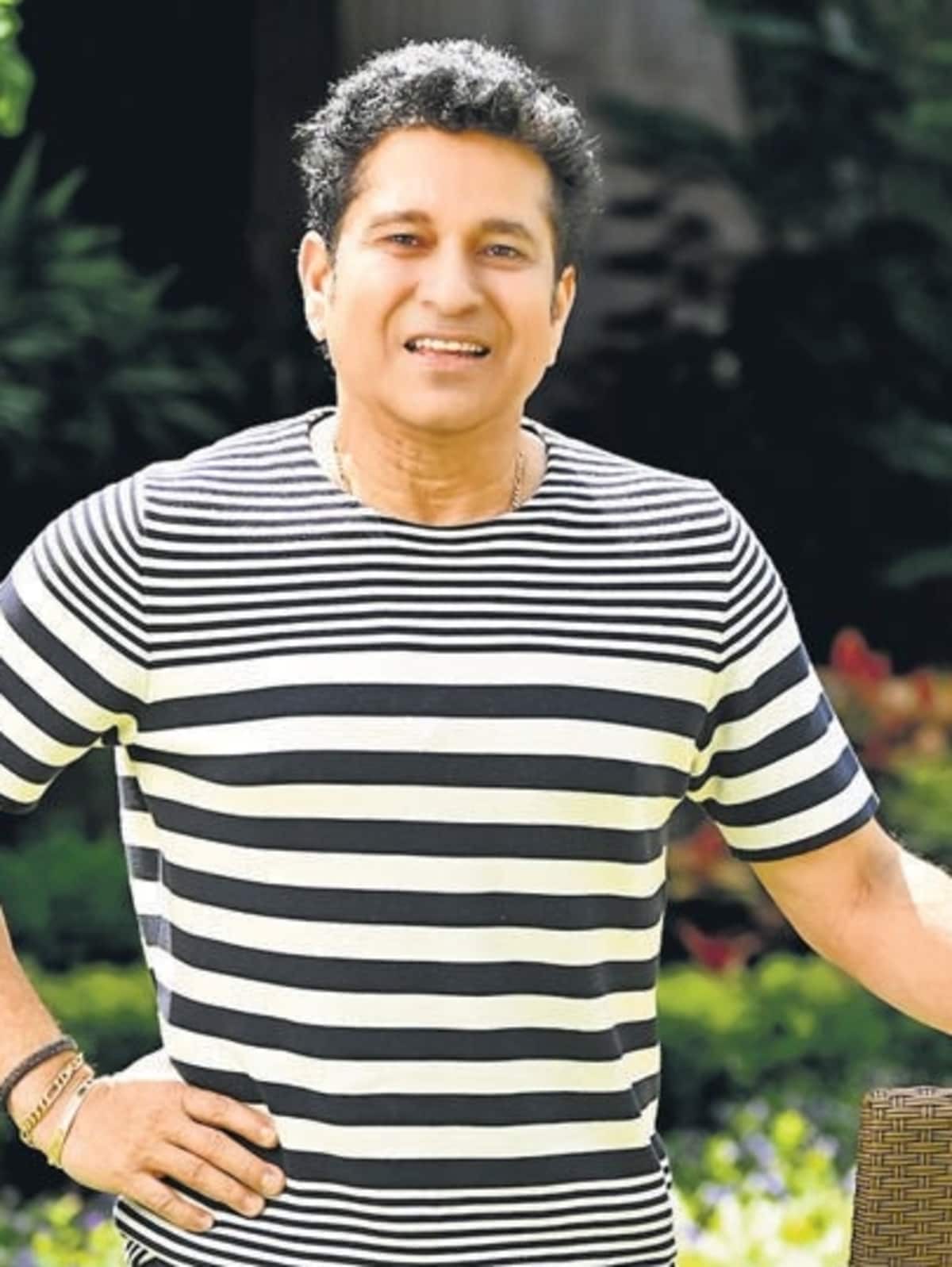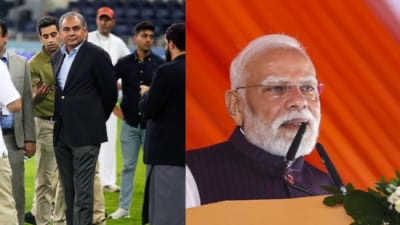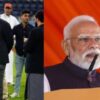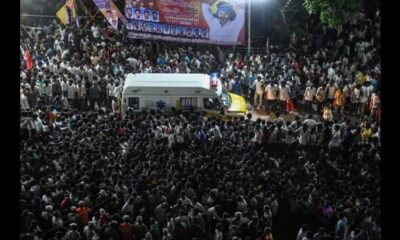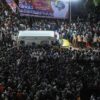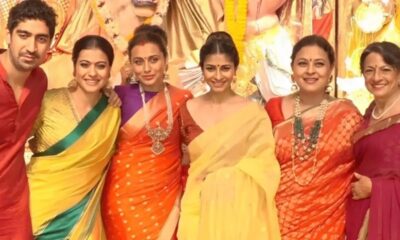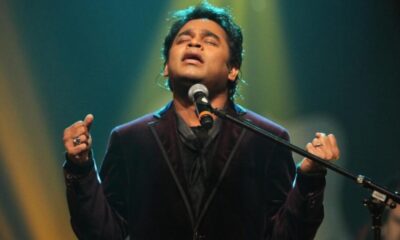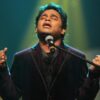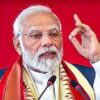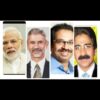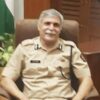Sachin opens up with the media why Mumbai remains closest to his heart
Sachin opens up with the media why Mumbai remains closest to his heart
Evolving in the quiet neighbourhood of Sahitya Sahawas in Bandra East to embarking a career in cricket at the bustling Shivaji Park in Dadar, Sachin Tendulkar emerged as Mumbai ’s cherry-picked son.
One among the most paramount names in world cricket, he is also a global icon, who is now privileged of choosing to live anywhere in the world. His heart, however, beats only in Mumbai.
Prior to attaining unparalleled stardom, Tendulkar did everything a typical Mumbaikar usually does — sip on chai at Irani cafes, scan through street food options at roadside stalls, relish the rains and head out for long drives.
In the uninhibited chat, the master-blaster spared time to talk about the city which he still calls his home.
What has Mumbai meant for him over the years?
He took a lot of things for granted through his early years in Mumbai. It is only when he tarted travelling to different places finally that he understood various cultures and ways of life.
His childhood was made special thanks to his friends and family. His memories of childhood are meshed with his memories of Mumbai of that time. The city prepared him for what was to come. A lot has transformed since then but they are in a fabulous spot. He may travel the world, but wants to always return to Mumbai.
What is so special about Mumbai?
You realise what you miss only when you spend time away from Mumbai. His family and friends are here. When you spend time away from the city, things eventually start looking monotonous. That’s when you want to return.
How have you seen the city evolve — from the time he was a child evolving in Sahitya Sahawas to now?
Big time. He started picking up little things he saw around him when he was five or six years old. He was exposed to scholars who lived in the neighbourhood. His own father was a writer. A housing society near their residence called Arctech, housed many architects. Before it was turned into residences, it was a hostel for students of the Sir JJ School of Arts. Close by was also Patrakar where journalists lived. So, I grew up amid an eclectic crowd.
We would take a lot of pride competing against each other representing our housing societies. Kids from MIG Colony would also join us. All that is a thing of the past. Now, the area is surrounded by 30-40 storey skyscrapers. He could never imagine this kind of transformation while practising at MIG.
At the time, behind their colony in Bandra East was a large swathe of open land. There was nothing till Sion. We used to take walks there, and sometimes witness snakes emerging from the jungles. Today, who would imagine that! Everything started transforming around 2003-05.
Comparing that time to now is like comparing chalk and cheese.
And that includes the place where we are sitting right now – the Jio World Drive, BKC.
Exactly. There was nothing here, save a drive-in theatre behind our building. He would stand on his fourth floor balcony and observe the cars. That’s how his interest in cars grew. He remembers precisely the few models that used to drive in — Fiat, Ambassador, 118 NE, Standard 2000 and Contessa. A few people had Impalas and such. His brother Ajit and he would spend hours spotting the cars. Sometimes, would take walks around the highway (Western Express Highway, near Bandra). All those memories are fresh till today.
Many places in Mumbai have a rich history and legacy. Eminent personalities who have shaped our society have lived and continue to live here. As we modernise and new buildings come up, public and private entities should think of ways to ensure how to take the legacy forward. To cite an example, in Bandra East, new communities or buildings can continue to retain Patrakar Colony, Sahitya Sahawas, Arctech, etc, as names. This way, we have one foot in history and the other in the future.
Since he had a fascination for cars, which his favourite place to drive in Mumbai?
The Bandra Worli Sealink is a fabulous road to drive on. It is convenient, without traffic and therefore stress free. He went for a drive with his friends just the other day; we were driving at 50 km/hr, and drove all the way to the airport. He drives are often unplanned.
About Mumbai monsoon to-do things?
He makes himself a nice cup of coffee. It sets the mood. Any conversation about monsoons throws him back to his childhood in Sahitya Sahawas, where they played football and cricket – the two signature sports of the season. Nothing stopped them not even the waterlogged streets. Sometimes played hand tennis as well.
Any places he visits now that you couldn’t earlier?
Sometimes, he visits Shivaji Park in the odd morning hours. He had missed out on visiting (Ramakant) Achrekar sir’s place on Guru Purnima day. So, when he returned from England, called his friends and decided to visit Achrekar sir’s memorial, just the other day. He also often visits Siddhivinayak temple.
Shivaji Park is where it all started for him. The uniqueness of that ground compared to others?
It was his life, and continues to be. That is where it all started for him. He would get there at 7am amidst their summer holidays, practise in the morning, play a match, practise again, and then play TT at the Shivaji Park Gymkhana. So would be there from 7am to 9-9.30pm. His friends and he never got tired. They felt the exhaustion only on their walk back home.
As a cricketer, he first came to grips with the size of the ground at Shivaji Park, compared to Cross Maidan or the gymkhanas, where boundaries are short and you could run without getting tired.
Shivaji Park had long boundaries, so running between the wickets was the umpire’s discretion. Sometimes when he felt the ball hadn’t crossed a spot (to award a boundary), we had to run more. It made them physically strong and mentally tough. One full round of Shivaji Park was good enough for them, but Achrekar sir would intentionally not let him run before practise. They had to normally do one lap before and after our session.
But with him, he was different. The moment he reached the ground he would ask him to pad up and get in the nets. He would get him tired, and then tell him “You missed the pre-session lap.” So with the pads on and bat in hand, would do two laps.
That’s the only time he wished the ground were smaller. But it helped. In retrospect, when he played at Wankhede or anywhere else, he actually felt that the ground was not that big.
Between the pitches of that ground (Kamat Memorial CC), Wankhede or Melbourne Cricket Ground, could you easily make out which is Shivaji Park’s pitch?
Absolutely. With his eyes shut; because their pitch was completely worn out. Additionally, sir encouraged them to get connected with cricket in a much deeper fashion than any other coach would. He made them roll the pitch, water it and put the nets. It deepened our connection with the sport. A lot of the players those days had a common kit bag, not personalised ones. One of the buildings in the neighbourhood belonged to Jitu Thakre. His family decided to give out one small storage area for us to keep our kit.
He still remembers the stink of the sweaty bag and can never forget it. The bag would never be fully dry as it was used throughout the day. No Sharadashram kid can forget that smell.
He was a fan favourite on any ground. But how special was it playing in front of his home crowd at Wankhede?
Very special, without any doubt. The old Wankhede stadium also had its own charm. He played most of his cricket in that stadium, not the new one. It was unbelievable when he started playing international games in the 1990s (he played a few Ranji Trophy games in the late 1980s). Sometimes the stadium became so loud that one had to, very discreetly and subtly, close their ears. He has done that too, facing an energetic and loud crowd. That energy inside the stadium was something else. It got them going. They have watched that Ranji Trophy final against Punjab, and the double hundred against Australia at CCI. Can you share the difference in experiences between playing at Wankhede and CCI?
CCI was different. He remembers as a 14-year-old, was playing for Shivaji Park Youngsters against CCI at the Shivaji Park Gymkhana. He had scored some 65-70 runs. Madhav Apte sir was keeping at that time, and he saw that innings. Then, Milind Rege, Raj bhai (Raj Singh Dungarpur) and Apte sir got together and decided to bring me to CCI. In those days, under-18s were not allowed to enter the dressing room or be in that area at CCI. So they had to relax that rule for me. From thereon, things changed for me — a CCI membership and playing for CCI.
Your bond with Mumbai cricket is special. Even through your 200-Test career, he would go out of his way to still make time and play for Mumbai.
He took a lot of pride in playing for Mumbai. There was not as much international cricket in the early and mid-1990s as there is today. I played as and when I was available. There were occasions when I returned from New Zealand at night and turned up for Ranji Trophy the next morning. That zeal has to come from within. It meant a lot to me. He enjoyed being there as well as the Mumbai dressing room. They practised as hard as one possibly could. And we enjoyed it.
Every Mumbai cricketer’s journey starts with travelling in BEST buses and local trains. Does he remember those times, and still remembers the bus number he would take?
Very much so. 314 and 315, between Bandra and Shivaji Park. 97 limited was the fast bus. Cannot forget the first time his brother took him to Shivaji Park for trials. He was teaching him where to get down and stuff like that. He was only eleven-and-a-half or so.
On many occasions, the passengers or the bus conductor would shout at us for carrying such big kit bags and our filthy clothes. Their only advantage was that, since their clothes were filthy no one would want to come close to us. But enjoyed all that travelling by train too. He used buses and trains for travel till 14 or so. Subsequently, when started playing Ranji Trophy, father said, “Now will travel by taxi.” did not have deep pockets at the time which would allow him to take a taxi, but his father insisted. He said if he was to stay in the right frame of mind to play a Ranji match, he should not be using public transport. Thereon things started moving very quickly.
It must have been difficult to handle the kit bags in local trains.
He knew! But managed. There were occasions where he had no choice but to stand by the door. Even when he had the choice to take a seat, would continue to stand by the door. It wasn’t ideal, and parents would be worried constantly. But he wasn’t an easy kid to manage.
Favourite places to hang out back in the day?
That was always Shivaji Park – more for the company than the spot. Had limited places to hang out at the time. After practise sessions, it would be Shivaji Park. When playing a match at Azad Maidan or Cross Maidan, would land up at khao gali. would save up money for food and share it among themselves. They would pass around one bottle of soft drink between them putting markers on the bottle – each one of us could only drink to that point, in one massive gulp. Mastered that art!
What’s your favourite Mumbai street food?
Khao guli’s pao bhaji. That smell drove us mad back then. It still does.
They also know their expertise in being able to distinguish a vada pav of Dadar from one of Bandra.
Yes, he can, because the chutney and masalas inside are different. Many guys have tried fooling him but haven’t succeeded.
Mumbai is also famous for its Irani cafés.
Yes, there was an Irani café around the corner of Shivaji Park. Coincidentally, there’s a hospital just there on the first floor, where he was born. There were Irani cafés even next to the Metro cinema and Excelsior.
So had our spots. Knew where to go, and where could get good Irani chai, which was orange in colour, accompanied by bun muska. In fact, discussed this in their friends’ circle recently and felt that at some point should revisit those places.
News Edit KV Raman


